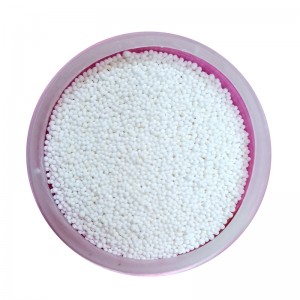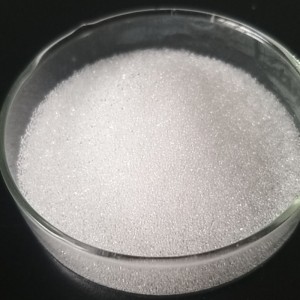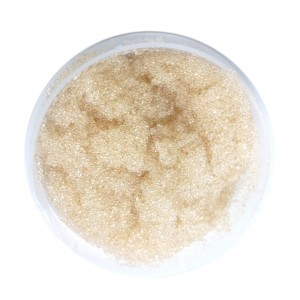
DONGLI OL100 Strong Acid Cation Exchange Resin
DONGLI OL100 Strong Acid Cation Exchange Resin
DONGLIOL100 is insoluble in acids, alkalies, and all common solvents, however exposure
to free chlorine and other strong oxidizing agents over a long period of time will attack the
polymer matrix, causing the resin moisture retention to increase.
| Polymer Matrix Structure | Styrene Crosslinked with DVB |
| Physical Form and Appearance | Opaque beads |
| Whole Bead Count | 95% min. |
| Functional Groups | CN2-N+=(CH3)3) |
| Ionic Form ,as shipped | SO4 |
| Total Exchange Capacity, SO4- form, wet, volumetric | 1.10 eq/l min. |
| Moisture Retention, CL- form | 50-60% |
| 0.71-1.60 mm >95% | |
| Swelling CL-→ OH- | 10% max |
| Strength | Not less than 95% |
PROCESS DESCRIPTION
The coalescing agent has two distinct areas of operation:
The area of Coalescence
Micro-droplets of oil are captured by the oleophilic resin Purolite OL100 forming a film of
hydrocarbon around the material. Continuous film drainage occurs in the resin bed and
large droplets of oil are sheared off at the exit face by the upward velocity of the water.
The broken film reforms itself perpetually making the process self-regenerating.
The area of Decantation
The large oil droplets rise to the top of the unit through a “chimney” which is installed to
direct the flow of droplets away from the treated water outlet. Separation is further
assisted by reduction in water velocity which occurs as the water leaves the top of the
chimney and begins its downward passage. The oil droplets combine at the top of the
unit to form a separated layer of hydrocarbon which is discharged continuously via an
automatic liquid level controller.
The treated condensate is taken off continuously at a low level through a side outlet.
Write your message here and send it to us








